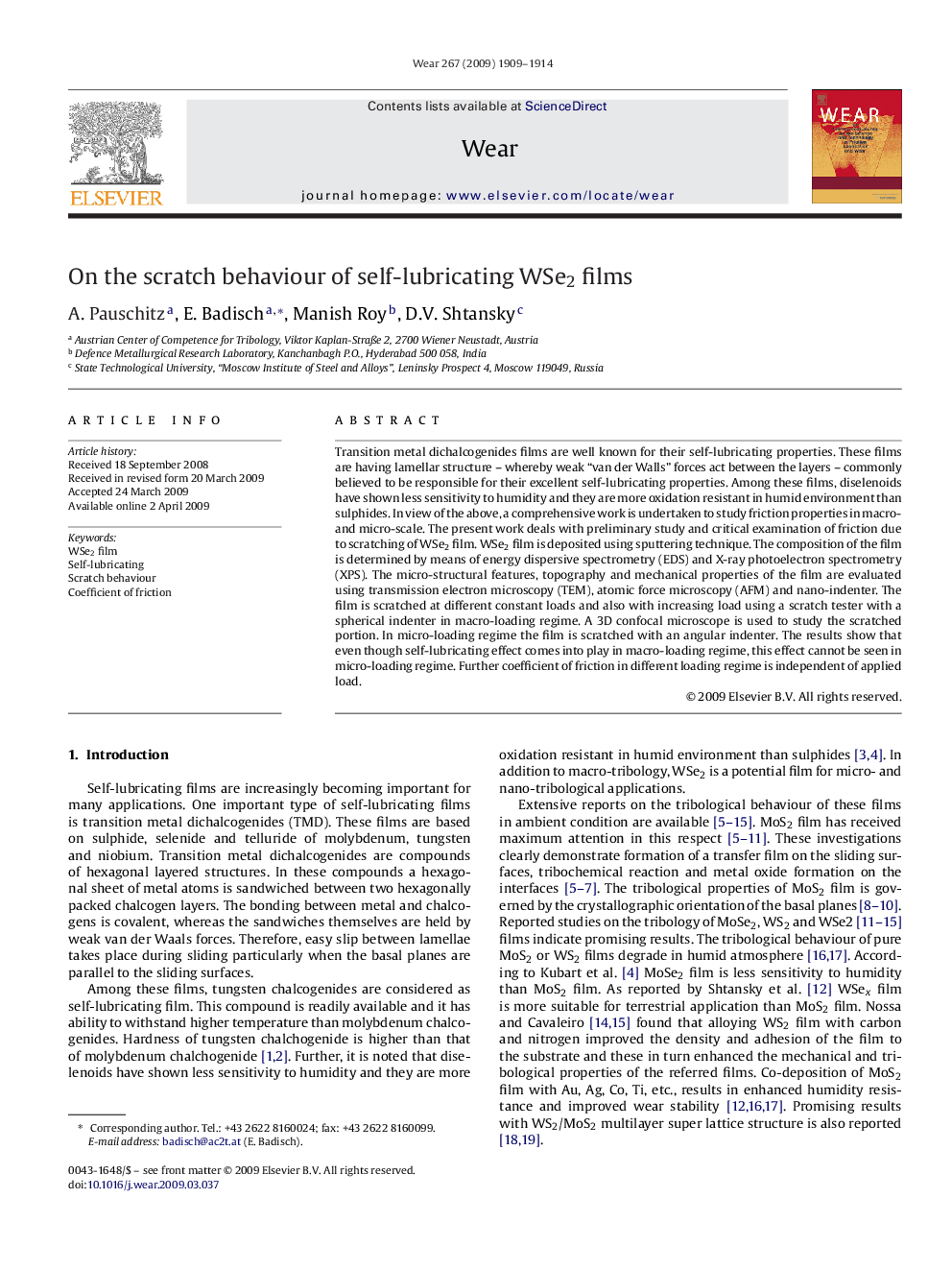| Article ID | Journal | Published Year | Pages | File Type |
|---|---|---|---|---|
| 619229 | Wear | 2009 | 6 Pages |
Transition metal dichalcogenides films are well known for their self-lubricating properties. These films are having lamellar structure – whereby weak “van der Walls” forces act between the layers – commonly believed to be responsible for their excellent self-lubricating properties. Among these films, diselenoids have shown less sensitivity to humidity and they are more oxidation resistant in humid environment than sulphides. In view of the above, a comprehensive work is undertaken to study friction properties in macro- and micro-scale. The present work deals with preliminary study and critical examination of friction due to scratching of WSe2 film. WSe2 film is deposited using sputtering technique. The composition of the film is determined by means of energy dispersive spectrometry (EDS) and X-ray photoelectron spectrometry (XPS). The micro-structural features, topography and mechanical properties of the film are evaluated using transmission electron microscopy (TEM), atomic force microscopy (AFM) and nano-indenter. The film is scratched at different constant loads and also with increasing load using a scratch tester with a spherical indenter in macro-loading regime. A 3D confocal microscope is used to study the scratched portion. In micro-loading regime the film is scratched with an angular indenter. The results show that even though self-lubricating effect comes into play in macro-loading regime, this effect cannot be seen in micro-loading regime. Further coefficient of friction in different loading regime is independent of applied load.
